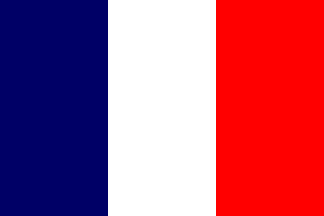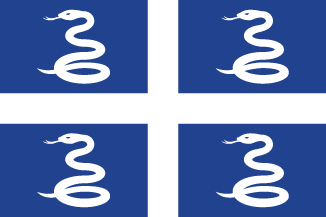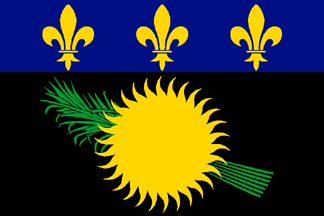Martinique, Dominica & Guadeloupe (Caribbean)
Rondônia (Brazil)
|
|
|
< previous Archives (Oceania) |
(Archives menu) |
(Europe) next Archives > |


 Martinique, Dominica & Guadeloupe (Caribbean)
Martinique, Dominica & Guadeloupe (Caribbean)
(1999, Cornelia & Fabrice)
Still in the higher spheres of Cornelia's end-of-study party we set off for Martinique, Dominica and Guadeloupe. Martinique and Guadeloupe are the French equivalent of the "Costa del Sol", but there still some of both islands left for the vagabonds.
|
|
In Martinique on of the things we did was a "daredevil" hike; we rounded the north side of the island with backpacks; apart from excess of luggage, shortage of water and food, the trail was officially closed due to previous heavy rainfall. So we did have to jump some minor landslides (with a fifteen kilo backpack!) blocking the trail next to a hundred meter deep ravine. We finally made it to a village "Grand Rivière", on hands and knees, stopping each hundred meters for a rest, happy not to have to spend the night in the forest (we saw real scary spiders there). As a price, we found a local bar with a local rum-based fruit liquor and we even obtained the recipe to brew it ourselves. |
|
Best of the islands though, was Dominica. It is said that, when Columbus had to characterize this new island for the King, he fumbled up a piece of paper and threw it in a bucket of water with the words: "that is it: useless." But it is a wonderful island, independent and breathing freely. Although, as on the other islands, more tourists arrive a day in cruise-boats than there are inhabitants, these tourists hardly get out of the capital Roseau and only in the morning. One of the most lovely scenes was, when we took the bus to go south to a cascade. At the start, everybody was singing along with the radio, but after fifteen minutes, people silenced down. Then at a bus stop, a lady got on the bus, whishing with a loud voice "good morning". When there was no answer, she asked, even with a louder voice: "What, no good morning?" Now that is Dominica. |
|
(1997, Cornelia)
|
|
Rondônia is one of the youngest states in Brazil and it is boarders Bolivia and the Brazilian states of Acre, Amazonas and Mato Grosso. In this wonderful place the Amazonian jungle, the wetlands of the Pantanal and the Pampas of Mato Grosso meet. The state was appointed in the 1980's for migration to relieve the over crowded coastal area and as a consequence the state is being deforested at top rate. Pioneers come for two acres of ground, cut and burn down the forest and try to cultivate coffee which doesn't grow because of the poor sandy soil, turning the land into desert. |
|
One of the highlights of the North of Rondônia is certainly the railway to Bolivia. During the end of the nineteenth century, a railroad towards Bolivia was planned to transport rubber. Of the expeditions hardly anybody returned: malaria and hostile indigenes living in the forest were the cause. When the railway was finished, the rubber market collapsed. The steam engine was used until the mid 1970's to transport people, then the line was abandoned. In 1997, twenty-two kilometres of line was freed from the grip of the jungle again; the other three-hundred kilometeres still await liberty. But the steam engine rides people from Porto Velho to the Teotônio rapids with a spectacular trip: on the side of the railway, old wagons and engines were left when they stopped functioning and now the trees grow out of them! |
|
|
|
Cow-boys drive cows by hundreds from fazenda (ranch) to fazenda blocking up roads and the "highway" if necessary. Roads are a happening on their own due to the pot-holes, clandestine wood-trucks that drive without lights at night and crazy truckers that insist to overtake on un-advisable places. Not to mention the peril of bridge-like structures. |
|
I spend three months with some colleagues in a jeep crossing around for a mapping project to facilitate planning of land-use. It was quite exiting.
Everybody carries a gun which can cause quite distressing scenes. Big landowners, the sem-terra movement (the landless), indigenes and guarimpeiros (gold and diamond miners) battle for land.
But we also ran into the kindest people, invitng for lunch, asking us to bring their kid to school with the car because she was running late and once someone offered us turtle-eggs, which we refused politely ...
Find out how I ended up in Rondônia on Cornelia's page |
|
(1996, Cornelia)
|
Brazil is often characterized as the country of contradictions, but I found out that that applies to many countries, not only Brazil. However, the diversity of the country is as large as it's surface: beautiful coastline, pampas, jungle and enormous marshlands and swamps. After six months I got a fair picture of some of it, and I could write a book about what I saw, but there's enough left to go back again. Read what brought me to Brazil on Cornelia' page. |
|
I did do three months of working experience in Brazil, of which I spend two in São Paolo. Quite unexpectedly I came to "work" there in favela's, later I also had a pleasant surprise in Rio. Geological problems are common in these places that are often built in hazard-areas. The worst things of working in the favela's was to see how, people had to be forced to leave their homes for their own protection, often having spend all their life-savings to buy it.
The contrast of the horror-stories about these places and my own experiences was striking, although I have been only in a few favela's, not in the notorious ones and not as a tourist.
|
|
Apart from that I visited other places: - the fazenda (ranch) of friends, in the inlands of São Paolo where I had a horseback ride - the city of Ouro Preto, which is an old mining city in which people still find unexpected abandoned gold-mines in their back-garden. It also has an old university and I found out that weed smoking was more common there than in the Netherlands - the beautiful city of Salvador in Bahia, which is now (being) restored, where I was so stupid to have a Gypsy-lady read my hand ("your going to loose a lot of money soon...") - Brasilia, the most modern city in the world at a time, but where the garbage is still collected with mule carts and where the architects forgot to plan pavement for the pedestrians. |
< previous Archives (Oceania) |
(Archives menu) |
(Europe) next Archives > |